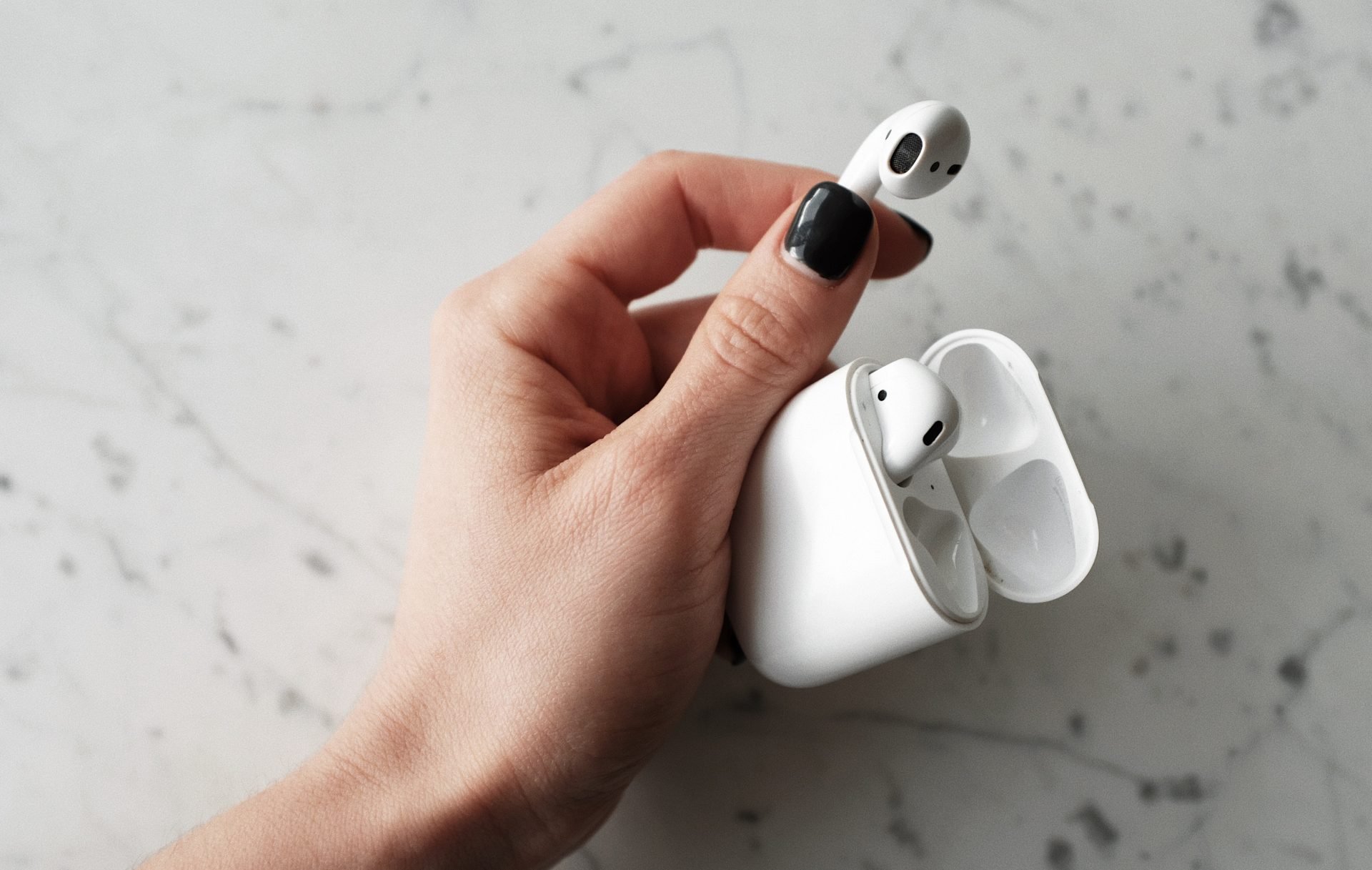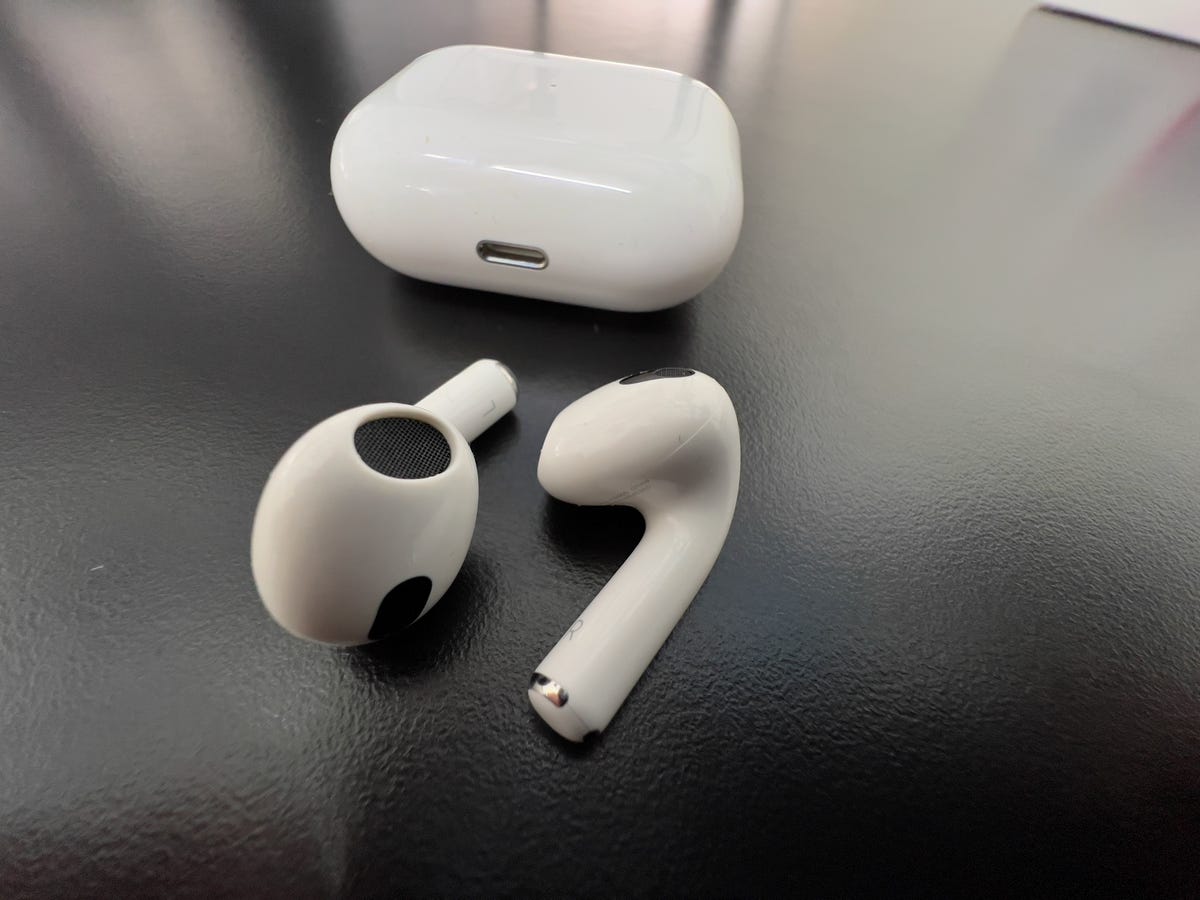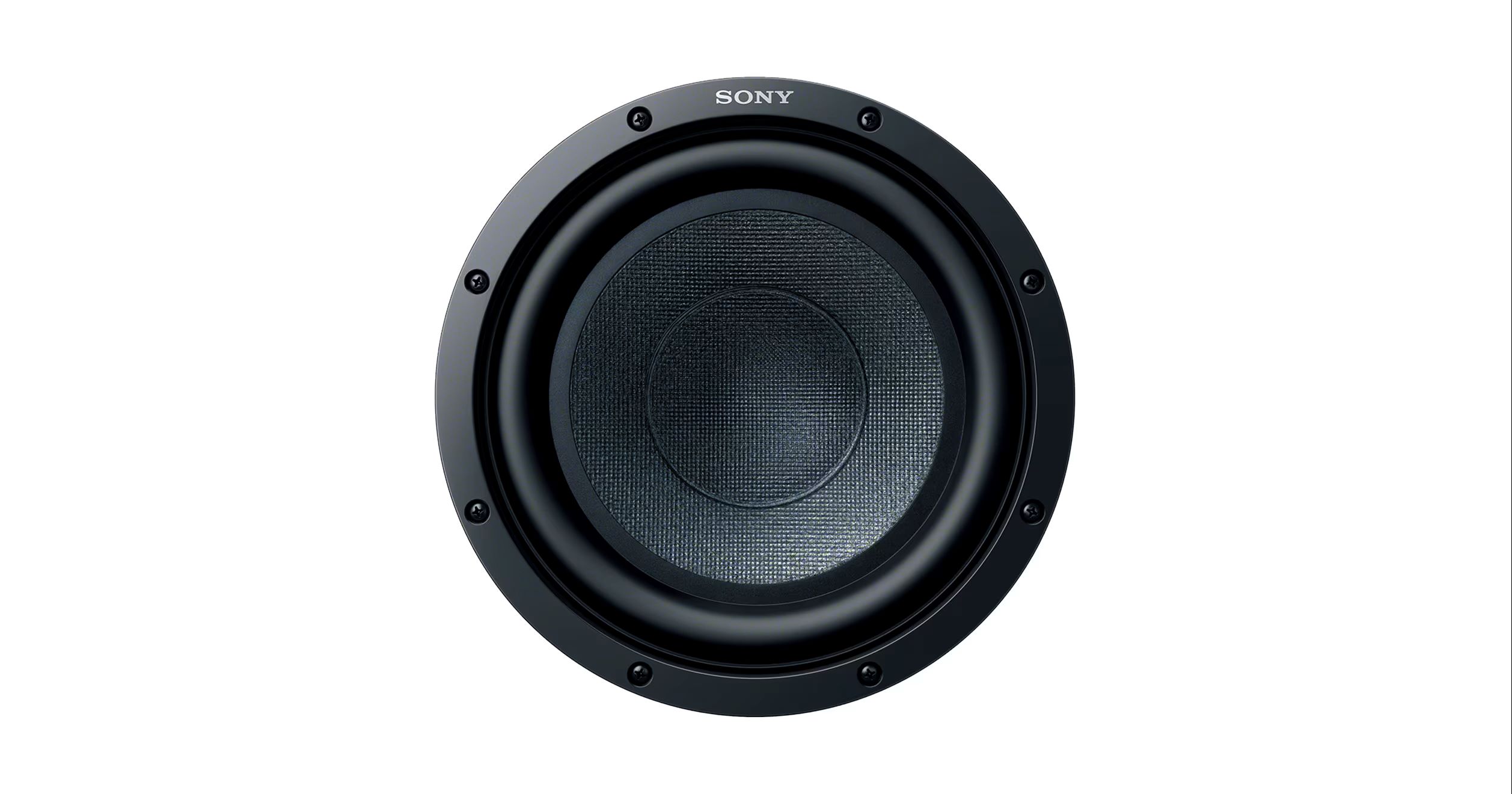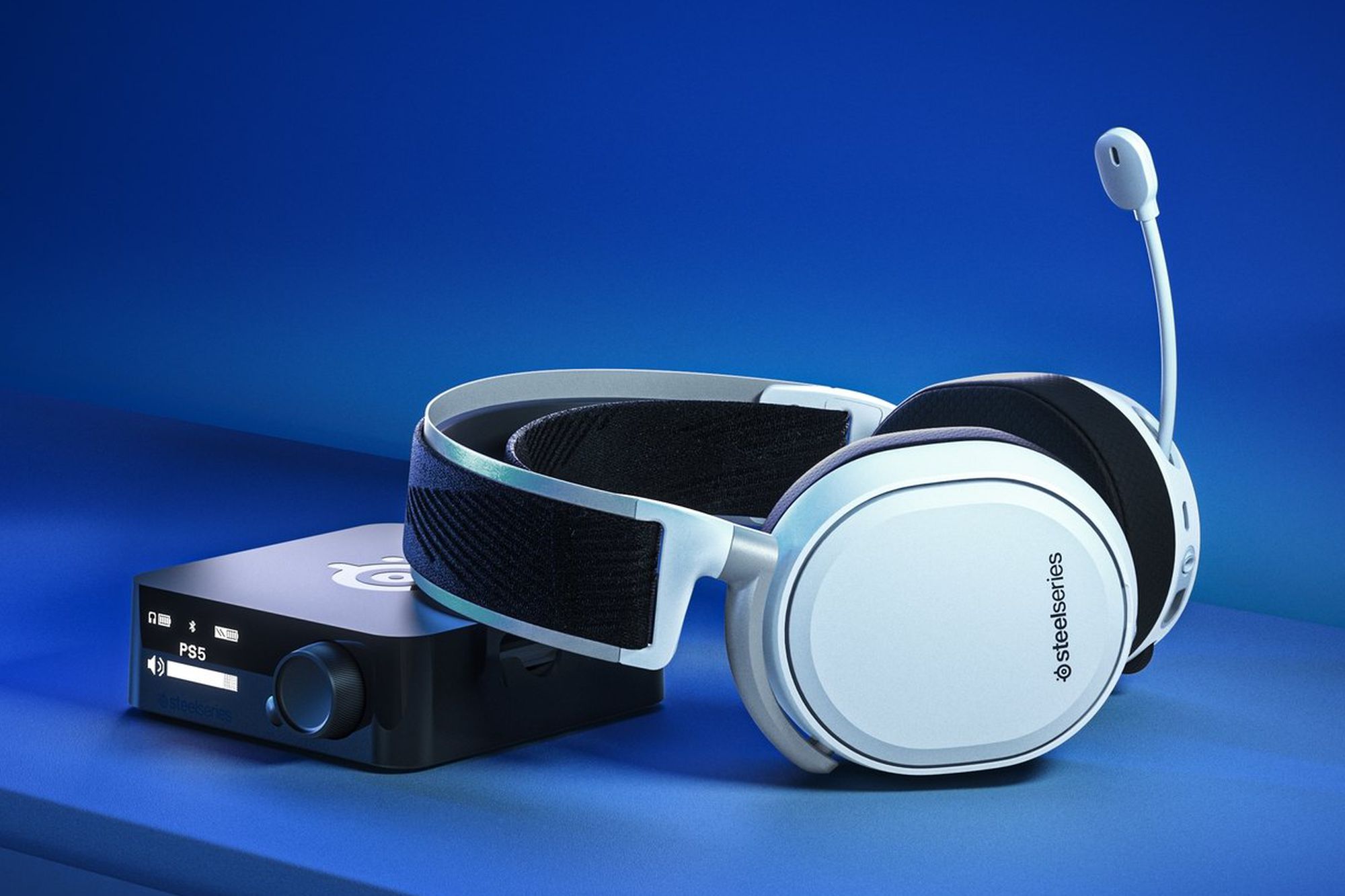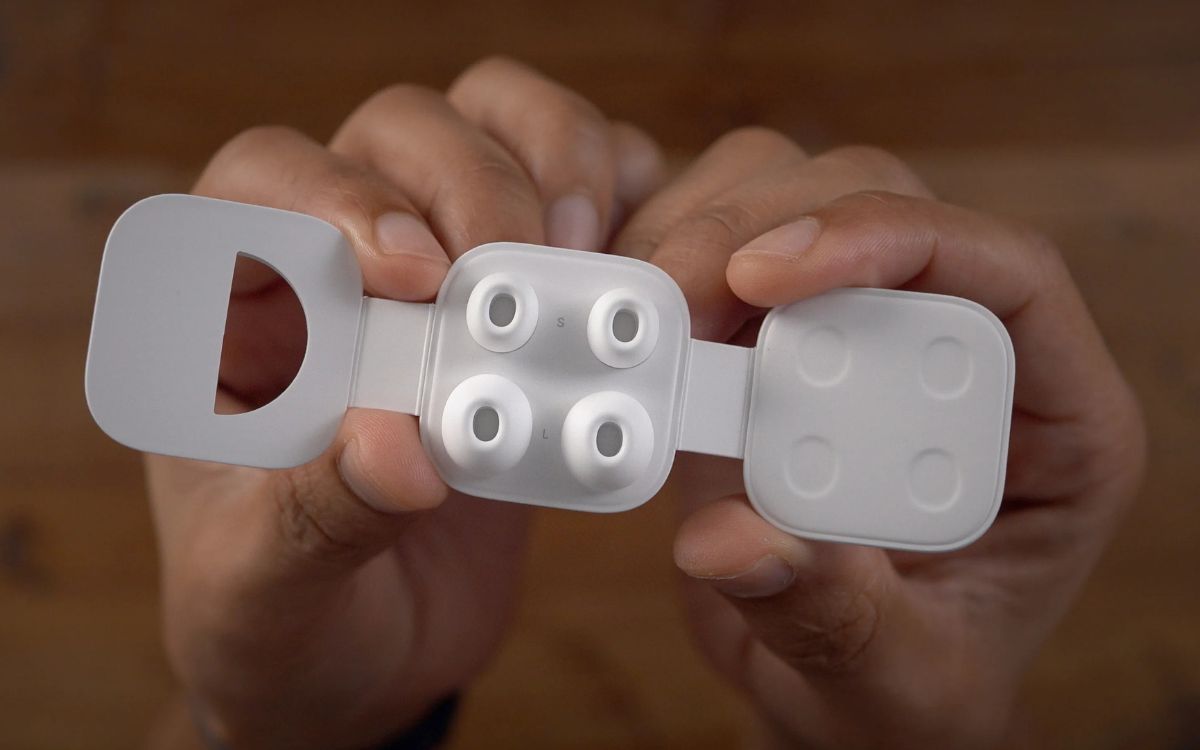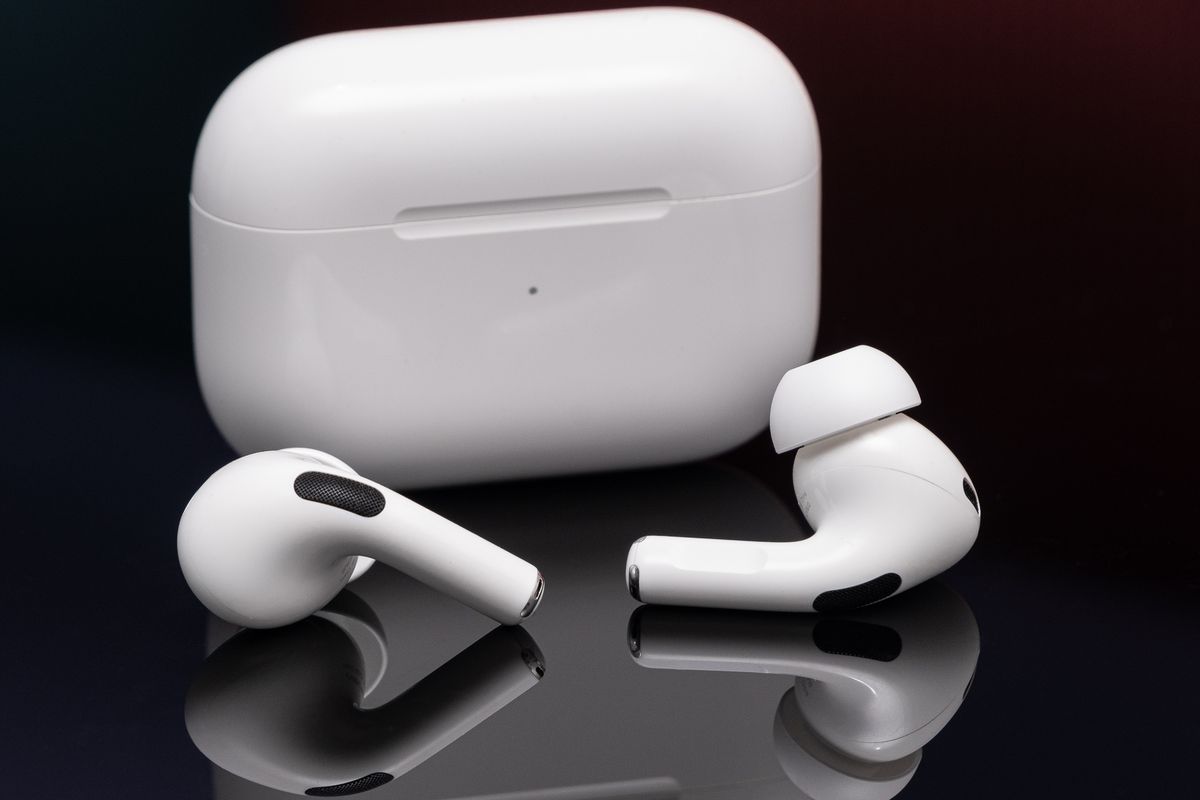Home>Production & Technology>Noise Cancellation>How Many Db Noise Cancellation AirPods Pro
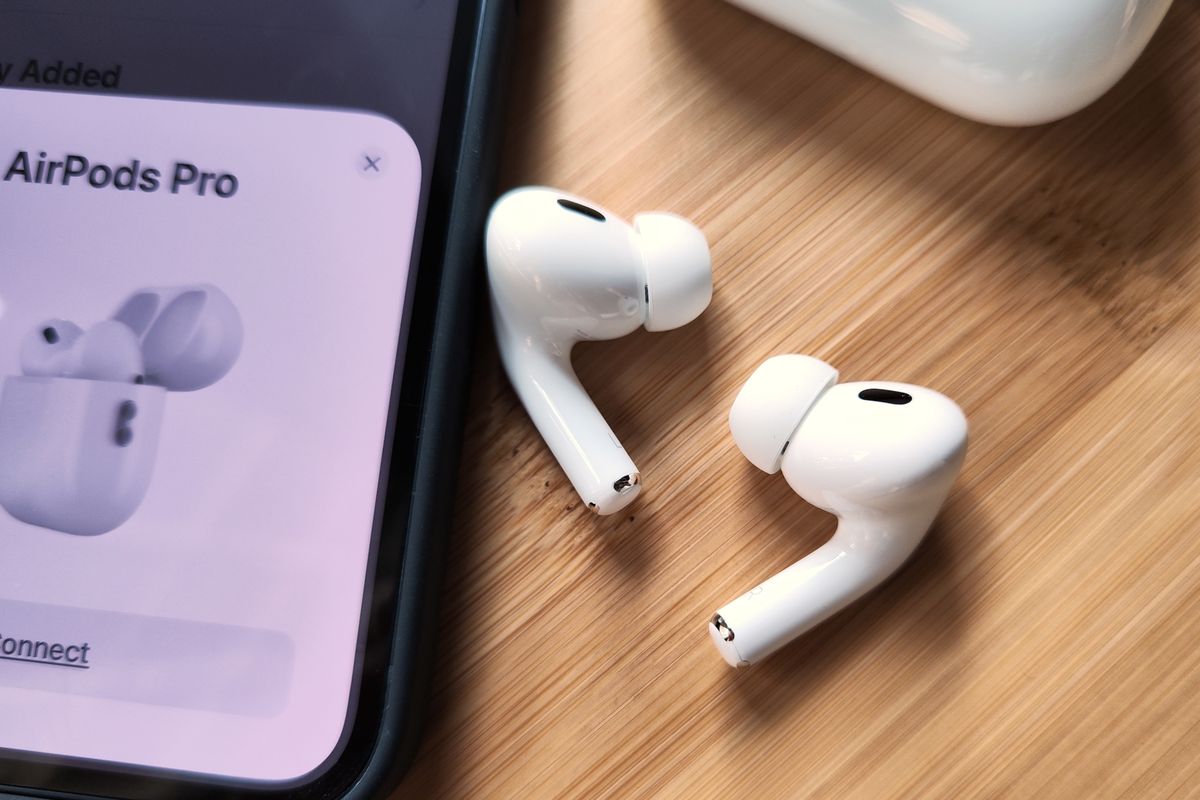

Noise Cancellation
How Many Db Noise Cancellation AirPods Pro
Modified: January 22, 2024
Discover the power of noise cancellation with the AirPods Pro. Enjoy crystal clear sound and block out unwanted distractions with these advanced wireless earbuds.
(Many of the links in this article redirect to a specific reviewed product. Your purchase of these products through affiliate links helps to generate commission for AudioLover.com, at no extra cost. Learn more)
Table of Contents
- Introduction
- How Does Noise Cancellation Work?
- The Benefits of Noise Cancellation
- Understanding Decibels (dB)
- Noise Cancellation Technology in AirPods Pro
- Comparing AirPods Pro to Other Noise-Canceling Earbuds
- Effectiveness of Noise Cancellation in AirPods Pro
- Factors That Affect the Efficiency of Noise Cancellation
- Tips for Maximizing Noise Cancellation in AirPods Pro
- Conclusion
Introduction
Noise cancellation has revolutionized the way we listen to music and experience audio in various environments. With the advent of noise-canceling headphones and earbuds, we are able to immerse ourselves in our favorite tunes without the distractions of background noise. One popular and highly acclaimed device in this category is the AirPods Pro, developed by Apple.
The AirPods Pro is equipped with advanced noise cancellation technology that aims to eliminate external sounds, providing users with a more immersive and enjoyable listening experience. But how does noise cancellation work, and just how effective is it in the AirPods Pro?
In this article, we will delve into the world of noise cancellation and explore how it is implemented in the AirPods Pro. We will also discuss the benefits of noise cancellation and how it can enhance your audio experience, whether you’re listening to music, watching movies, or making phone calls.
Additionally, we will explain the concept of decibels (dB), which is the unit used to measure sound intensity. Understanding decibels will help you grasp the impact of noise cancellation on your listening environment.
Moreover, we will compare the noise cancellation capabilities of the AirPods Pro to other popular noise-canceling earbuds on the market. How does Apple’s offering stack up against the competition?
Lastly, we will provide some helpful tips on maximizing the efficiency of noise cancellation in your AirPods Pro, ensuring you get the most out of this innovative technology.
So, whether you are a music enthusiast, a frequent traveler, or simply someone looking for a way to immerse yourself in your favorite audio content, join us as we delve into the fascinating world of noise cancellation with the AirPods Pro.
How Does Noise Cancellation Work?
Noise cancellation technology utilizes a combination of hardware and software to reduce or eliminate unwanted external sounds. It works by actively detecting and analyzing incoming sound waves and producing an equal but opposite sound wave to cancel them out, creating a more peaceful and immersive listening experience.
The process begins with the device’s microphones picking up sounds from the surrounding environment. These microphones capture the ambient noise, including background chatter, traffic, or plane engine noise. The device’s advanced signal processing technology then analyzes this noise and generates an inverse sound wave with the same amplitude but opposite phase.
When the generated inverse sound wave merges with the original sound wave, they undergo a process called destructive interference. This phenomenon causes the two waves to cancel each other out, resulting in a reduction or complete elimination of the external noise.
Noise cancellation technology is primarily effective in blocking out consistent, low-frequency sounds such as the hum of an air conditioner or the rumble of a train. These continuous noises are easier to counteract because their patterns are more predictable. However, it may not be as effective in suppressing sudden, high-frequency sounds, such as door slams or sudden bursts of laughter.
To achieve optimal noise cancellation, the device must continuously adjust the generated inverse sound wave based on changes in the audio environment. Advanced algorithms and real-time analysis allow the device to adapt its noise cancellation settings and maintain a consistent level of sound blocking.
It is important to note that noise cancellation technology is most effective when used with over-ear headphones or in-ear earbuds that provide a proper seal in the ear canal. This seal helps to isolate the ear from external sounds and enhances the performance of the noise cancellation technology.
Overall, noise cancellation technology is a remarkable innovation that allows us to enjoy audio content in a more immersive and distraction-free manner. By understanding how it works, you can appreciate the ingenuity behind this feature and make the most of it in your AirPods Pro.
The Benefits of Noise Cancellation
Noise cancellation technology offers a multitude of benefits that greatly enhance the audio experience. Whether you are a frequent traveler, an office worker, or just someone seeking a peaceful environment, noise cancellation can significantly improve your audio immersion and overall well-being. Here are some key benefits of noise cancellation:
- Improved Focus and Productivity: Noise-canceling headphones can help you concentrate better, especially in noisy environments such as open offices or coffee shops. By blocking out the distractions around you, you can stay focused on your work or studies and increase your productivity.
- Enhanced Audio Quality: Noise cancellation technology reduces the interference of external sounds, allowing you to enjoy your music, podcasts, and movies with greater clarity and detail. By eliminating background noise, you can fully immerse yourself in the audio experience and catch nuances that you might have missed otherwise.
- Reduced Ear Fatigue: When you listen to audio in a noisy environment, you tend to turn up the volume to compensate for the background noise. However, prolonged exposure to high volumes can lead to ear fatigue and potential hearing damage. Noise cancellation allows you to enjoy your audio at lower volumes, reducing the strain on your ears.
- Stress and Anxiety Reduction: Exposure to constant noise can contribute to stress and anxiety. By creating a more serene listening environment, noise cancellation technology helps to alleviate these negative effects and promote a sense of relaxation and calmness.
- Improved Sleep Quality: If you struggle with falling asleep or staying asleep due to external noises, noise-canceling earbuds can be a game-changer. They can block out snoring partners, street noise, or other disturbances, helping you achieve a more restful and rejuvenating sleep.
- Better Call Quality: Noise cancellation technology not only blocks out external noise from the environment but also enhances the clarity of your voice during phone calls. This results in improved call quality for both you and the person on the other end of the line.
Overall, noise cancellation technology has a wide range of benefits that make it a valuable feature in headphones and earbuds. Whether you need to stay focused, unwind, or simply enjoy your audio content in a more immersive way, noise cancellation can greatly enhance your listening experience and quality of life.
Understanding Decibels (dB)
Decibels (dB) are the unit of measurement used to quantify the intensity or volume of sound. It is a logarithmic scale, which means that each increase of 10 dB represents a tenfold increase in sound intensity. Understanding decibels is crucial when discussing noise cancellation and its impact on the audio environment.
At the lower end of the decibel scale, around 0 dB, we have the threshold of human hearing. This is the level of sound that is barely perceptible to the average human ear. As the intensity of sound increases, the decibel level rises accordingly. For reference, a normal conversation typically ranges between 60-70 dB, while a rock concert can reach upwards of 100 dB.
Noise cancellation technology aims to reduce the overall volume of sound entering the ear by generating inverse sound waves to counteract external noise. The effectiveness of noise cancellation is measured in the reduction of these decibels, with a higher reduction indicating more efficient noise cancellation.
It is important to note that decibels are measured on a logarithmic scale, meaning that a reduction of 10 dB represents a perceived halving of the sound intensity. Therefore, a noise cancellation device that reduces external noise by 20 dB can make a significant difference in the perceived volume of the surroundings.
When using noise-canceling headphones or earbuds, the decibel reduction achieved by the device is typically referred to as the “Noise Reduction Rating” (NRR) or “Active Noise Cancellation” (ANC) rating. This rating provides an indication of the device’s ability to suppress external sounds.
However, it is important to remember that noise cancellation technology is most effective at reducing consistent, low-frequency sounds. Sudden, high-frequency sounds may not be as effectively canceled out, as they have different wave patterns and may not be predicted by the noise cancellation algorithms.
By understanding decibels and how they relate to noise cancellation, you can better grasp the impact of this technology on your listening environment. It allows you to appreciate the advancements in noise cancellation technology and make informed decisions when choosing devices such as the AirPods Pro for a more immersive and enjoyable audio experience.
Noise Cancellation Technology in AirPods Pro
The AirPods Pro incorporates advanced noise cancellation technology to create a more immersive and uninterrupted listening experience. Apple utilizes a combination of hardware and software features to deliver effective noise cancellation in these wireless earbuds.
The AirPods Pro features a dual-microphone system in each earbud. One microphone faces outward to detect external noise, while the other microphone faces inward to monitor the sound reaching your ears. This design allows the AirPods Pro to analyze the ambient sound and create a precise inverse sound wave to cancel out unwanted noise.
Powered by Apple’s H1 chip, the AirPods Pro utilize advanced algorithms to continuously adapt and adjust the active noise cancellation settings in real-time. The chip’s high computational power ensures that noise cancellation is optimized for different environments and sound scenarios, providing a seamless and immersive audio experience.
In addition to active noise cancellation, the AirPods Pro also offers a transparency mode. This mode allows you to remain aware of your surroundings by amplifying ambient sounds, making it ideal for situations where you need to stay aware of your surroundings, such as when crossing a busy street or listening for announcements in an airport.
Apple has also implemented a feature called Adaptive EQ, which automatically tunes the audio to the shape of your ear. By analyzing the fit of the earbuds and adjusting the frequencies accordingly, the AirPods Pro deliver a personalized and optimized sound experience for each individual user.
The seamless integration of noise cancellation technology and other advanced features in the AirPods Pro sets it apart as a premium audio device. Whether you are listening to music, watching movies, or making phone calls, the AirPods Pro provides exceptional audio quality while minimizing external distractions.
It’s important to note that noise cancellation in the AirPods Pro can be controlled through the accompanying iOS device or by using the force sensors located on the stem of each earbud. This allows you to switch between noise cancellation, transparency mode, or completely turning off the noise cancellation feature to hear your surroundings more clearly.
Overall, the noise cancellation technology in the AirPods Pro is a testament to Apple’s commitment to providing a premium listening experience. With advanced features and intelligent algorithms, the AirPods Pro deliver impressive noise cancellation capabilities for a truly immersive audio experience.
Comparing AirPods Pro to Other Noise-Canceling Earbuds
When it comes to noise-canceling earbuds, the AirPods Pro stands out as a formidable contender in the market. However, it’s important to compare them to other popular noise-canceling earbuds to understand their strengths and weaknesses. Let’s take a look at how the AirPods Pro stack up against some of the competition.
Sony’s WF-1000XM4 stands as a strong competitor to the AirPods Pro. The WF-1000XM4 offers excellent noise cancellation capabilities, utilizing Sony’s advanced noise-canceling technology and adaptive sound control. Sony’s earbuds provide exceptional sound quality and a customizable listening experience through its mobile app, making it a solid choice for audio enthusiasts.
Bose is another reputable brand known for its noise-canceling technology. The Bose QuietComfort Earbuds offer top-notch active noise cancellation, with adjustable levels that allow users to customize their listening experience. The earbuds deliver powerful sound performance and intuitive touch controls for easy navigation.
Jabra Elite 85t is another competitor that should be considered. These earbuds feature adjustable noise cancellation, allowing users to find the right balance between noise blocking and remaining aware of their surroundings. The Elite 85t also boasts impressive sound quality and a comfortable fit.
One area where the AirPods Pro has an advantage is its seamless integration with the Apple ecosystem. The H1 chip ensures smooth connectivity and easy pairing with Apple devices, while features like Siri integration and automatic device switching enhance the user experience for Apple users.
When it comes to comfort and fit, the AirPods Pro’s in-ear design with customizable silicone tips provides a secure and comfortable fit for most users. The earbuds also feature a vent system that helps equalize pressure, making them suitable for extended wear.
Ultimately, the choice between these noise-canceling earbuds depends on personal preference, desired features, and ecosystem compatibility. While the AirPods Pro excels in integration with Apple devices and offers a good balance of sound quality and noise cancellation, other brands like Sony, Bose, and Jabra offer competitive options with their own unique strengths.
Before making a purchase, it’s recommended to consider factors such as sound quality, comfort, battery life, and the specific features that align with your needs. Reading reviews and testing out different options can help you determine which noise-canceling earbuds are the best fit for you.
Effectiveness of Noise Cancellation in AirPods Pro
The noise cancellation technology in the AirPods Pro has garnered praise for its effectiveness in reducing external noise and enhancing the audio experience. By combining advanced hardware and intelligent software algorithms, Apple has created a powerful noise cancellation system that sets the AirPods Pro apart from other earbuds on the market.
Users have reported a significant reduction in background noise when using the AirPods Pro. Whether it’s the hum of an airplane engine, the chatter of coworkers, or the rumble of a train, the active noise cancellation in the AirPods Pro works diligently to minimize these distractions and create a more immersive listening environment.
The AirPods Pro utilize a dual-microphone system to detect and analyze external sounds in real-time. The advanced software algorithms generate precise inverse sound waves to cancel out the incoming noise effectively. This means that even in noisy environments, such as bustling city streets or crowded cafes, the AirPods Pro can help create a more focused and enjoyable audio experience.
One area where the AirPods Pro particularly shines is in reducing low-frequency sounds. The technology excels at canceling out constant, droning noises like the hum of airplane engines or the rumble of public transportation. This makes the AirPods Pro an excellent choice for frequent travelers or individuals who work in noisy environments.
However, it is worth noting that noise cancellation may not be as effective in blocking sudden, high-frequency sounds like car horns or loud voices. While the technology can still provide some reduction in these noises, the effectiveness may vary depending on the specific sound and the intensity level.
To help users stay aware of their surroundings when needed, the AirPods Pro also features a transparency mode. This mode amplifies ambient sounds, allowing users to hear important announcements, conversations, or approaching vehicles without needing to remove the earbuds.
Overall, the noise cancellation technology in the AirPods Pro is highly effective and can significantly enhance the audio experience for users. Whether you’re traveling, working, or simply enjoying your favorite music, the AirPods Pro’s noise cancellation capabilities offer an immersive and distraction-free listening experience.
It is important to note that noise cancellation effectiveness can also depend on the fit and seal of the earbuds. Properly fitting the AirPods Pro with the provided silicone ear tips ensures optimal noise isolation and can improve the overall effectiveness of noise cancellation.
When considering the AirPods Pro, it’s essential to recognize the wide range of noise cancellation benefits they bring to the table. From reducing ambient noise to providing a more focused and immersive audio experience, the AirPods Pro truly excel in delivering effective noise cancellation in wireless earbuds.
Factors That Affect the Efficiency of Noise Cancellation
While noise cancellation technology in products like the AirPods Pro can significantly reduce external noise, the efficiency of noise cancellation can be influenced by several factors. Understanding these factors can help you maximize the effectiveness of noise cancellation in your device.
1. Fit and Seal: The fit and seal of earbuds or headphones play a crucial role in noise cancellation. A proper fit creates a seal that prevents external sound from entering the ear canal, allowing the active noise cancellation technology to work more effectively. It is essential to use the correct size ear tips and ensure a snug fit for optimal noise isolation.
2. Noise Frequency and Intensity: Noise cancellation is most effective against consistent, low-frequency sounds such as engine hum or air conditioning noise. Sudden, high-frequency sounds, like sharp shouts or car horns, are more challenging to cancel completely. The efficiency may also depend on the intensity and characteristics of the specific noise.
3. Noise Cancelling Technology Quality: The quality and sophistication of the noise cancelling technology incorporated in the device can significantly impact its efficiency. Advanced algorithms, multiple microphones, and powerful processing chips contribute to better noise cancellation performance. Higher-end devices often have superior noise cancelling capabilities compared to budget-friendly alternatives.
4. Environmental Factors: The surrounding environment plays a role in noise cancellation effectiveness. In relatively calm, consistent noise environments like an airplane cabin or a quiet office, noise cancellation is typically more successful. However, in extremely loud or unpredictable noise environments, noise cancellation may not be able to entirely eliminate all sounds.
5. Personal Hearing Sensitivity: Each individual may have varying sensitivity to different frequencies of sound. This can affect how effectively noise cancellation technology suppresses certain noises for different people. Some individuals may find certain frequencies still perceivable even with active noise cancellation engaged.
6. Music or Audio Volume: The volume at which you listen to your audio can impact the effectiveness of noise cancellation. Playing your audio at a moderate volume allows the noise cancellation technology to work more effectively and reduce the impact of external noise.
7. Battery Status: The battery life of the device may affect the efficiency of noise cancellation as the battery drains. Some devices may reduce the level of noise cancellation as the battery level becomes lower. It’s important to ensure your device is adequately charged for optimal noise cancellation performance.
By considering these factors, you can optimize the efficiency of noise cancellation in your device and enhance your overall audio experience. It’s important to keep in mind that while noise cancellation technology can significantly reduce external noise, it may not entirely eliminate all sounds in every situation. However, with advancements in technology, noise cancellation continues to improve, providing users with a more immersive and peaceful listening experience.
Tips for Maximizing Noise Cancellation in AirPods Pro
The AirPods Pro offers impressive noise cancellation capabilities, and by following these tips, you can maximize the effectiveness of this feature:
- Ensure a Proper Fit: Properly fitting the AirPods Pro with the provided silicone ear tips is critical. Experiment with different ear tip sizes to find the best fit that creates a tight seal in your ears. A good seal enhances noise isolation and improves the overall effectiveness of noise cancellation.
- Upgrade your Firmware: Regularly check for firmware updates for your AirPods Pro. Apple may release updates that can improve noise cancellation performance or introduce new features that enhance your audio experience.
- Use the Right Listening Mode: The AirPods Pro offers three listening modes: noise cancellation, transparency mode, and off. Choose the appropriate mode depending on your environment and requirements. Use noise cancellation when you want full immersion, transparency mode when you need to hear your surroundings, and off mode when noise cancellation isn’t necessary.
- Minimize External Noise Sources: Noise cancellation technology works best in quieter environments. Reduce background noise where possible by finding a quiet location or using soundproofing techniques, such as closing windows or doors.
- Avoid Distractions: Limit distractions that can interfere with noise cancellation. Close unnecessary apps or notifications on your connected device and focus on your audio content. By minimizing distractions, you can fully immerse yourself in the audio experience.
- Optimize Volume Levels: Listening to audio at moderate volume levels can enhance noise cancellation effectiveness. Excessively high volume may mask the benefits of noise cancellation or potentially damage your hearing. Find a comfortable volume level that allows you to enjoy your audio while still benefiting from noise cancellation.
- Stay Mindful of Battery Life: Noise cancellation may be affected as the AirPods Pro’s battery level drops. Ensure that your earbuds are adequately charged for optimal noise cancellation performance. When the battery is low, consider recharging them to maintain the best audio experience.
- Experiment with Audio Content: Different audio content may have varying levels of noise cancellation effectiveness. Experiment with various genres of music, podcasts, or movies to find content that maximizes the benefits of noise cancellation and complements your personal preferences.
- Keep Firmware and Software Updated: Ensure that your AirPods Pro and connected iOS device have the latest firmware and software updates installed. These updates often include improvements and optimizations that can enhance the functionality and performance of noise cancellation in the AirPods Pro.
- Take Care of Your AirPods Pro: Clean your AirPods Pro regularly to maintain optimal performance. Accumulated debris or earwax can obstruct the sound ports and impact noise cancellation efficiency. Follow Apple’s recommended cleaning procedures to keep your AirPods Pro in top shape.
By following these tips, you can optimize the noise cancellation capabilities of your AirPods Pro and enjoy a more immersive and distraction-free audio experience, whether you’re tackling work tasks or simply enjoying your favorite music.
Conclusion
Noise cancellation technology has revolutionized the way we experience audio, and the AirPods Pro exemplifies the advancements in this field. With its powerful noise cancellation capabilities, the AirPods Pro provides a more immersive and enjoyable listening experience, whether you’re in a noisy office, on a bustling city street, or traveling on a plane.
Through a combination of advanced hardware and intelligent software algorithms, the AirPods Pro effectively reduces external noise, allowing you to focus on your audio content without distractions. The dual-microphone system and the H1 chip work seamlessly to analyze and counteract unwanted noise, providing a serene listening environment.
It is important to note that while noise cancellation technology in the AirPods Pro is highly effective, its effectiveness can also be influenced by factors such as fit, noise frequency, and the surrounding environment. Optimizing these factors, along with following tips for maximizing noise cancellation, can further enhance your audio experience with the AirPods Pro.
When comparing the AirPods Pro to other noise-canceling earbuds, it is evident that Apple’s integration with its ecosystem, advanced algorithms, and overall user experience set the AirPods Pro apart from the competition. However, it’s important to consider personal preferences, usage scenarios, and specific needs when choosing the right noise-canceling earbuds.
In conclusion, the AirPods Pro offers a compelling combination of noise cancellation technology, comfort, convenience, and integration with the Apple ecosystem. Whether you’re a frequent traveler, a music enthusiast, or someone who values a distraction-free audio experience, the AirPods Pro remains a top choice for those seeking a premium noise-canceling earbud option.
With the continuous advancements in noise cancellation technology, we can look forward to even more impressive innovations in the future, further enhancing our audio experiences and allowing us to immerse ourselves in sound like never before.

